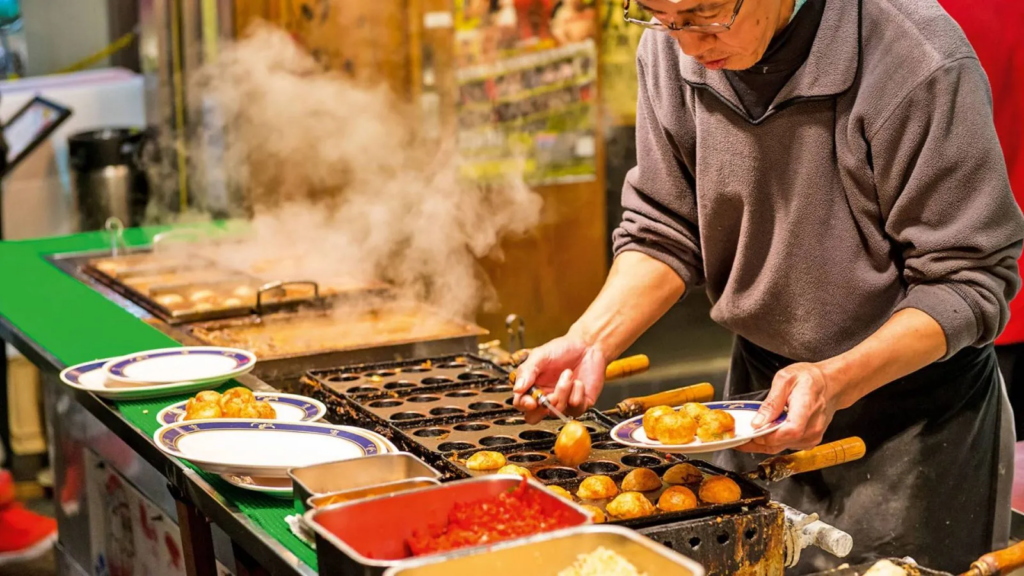
Introduction
Culinary tourism, a delightful blend of travel and gastronomy, has captured the hearts of food enthusiasts worldwide. Defined as the pursuit of unique and memorable eating and drinking experiences, this trend is rapidly gaining popularity. Let’s explore the world through its diverse cuisines and delve into the realm of culinary tourism.
Benefits of Culinary Tourism
Cultural Exposure
One of the primary advantages of culinary tourism is the profound cultural exposure it offers. As travelers savor local dishes, they gain insights into the history, traditions, and daily lives of the communities they visit. Food becomes a gateway to understanding the essence of a culture.
Economic Impact
Culinary tourism doesn’t just tantalize taste buds; it also stimulates local economies. Restaurants, markets, and food-related businesses benefit, contributing to the financial well-being of the destination. This economic impact fosters a sustainable and mutually beneficial relationship between travelers and the local community.
Social Connections
Food has an incredible ability to bring people together. Culinary tourism facilitates social connections, encouraging travelers to share meals and stories with locals and fellow enthusiasts. These shared experiences create lasting memories and foster a sense of global community.
Top Culinary Tourism Destinations
Italy: The Land of Pasta and Pizza
Italy, renowned for its pasta and pizza, is a mecca for culinary enthusiasts. From the streets of Rome to the vineyards of Tuscany, each region offers a unique and delectable culinary experience.
Japan: Sushi Delights
Japan’s sushi, ramen, and sashimi are revered globally. Culinary tourists can explore bustling markets in Tokyo or savor traditional kaiseki in Kyoto, experiencing the artistry and precision of Japanese cuisine.
Mexico: Spices and Flavors
Mexico’s vibrant and spicy cuisine beckons food lovers. From street tacos to mole sauces, the diversity of Mexican flavors is a testament to its rich culinary heritage.
India: A Spice Odyssey
Embark on a spice odyssey in India, where the aroma of curries, biryanis, and street snacks fills the air. Each region boasts its own distinctive culinary traditions, creating a tapestry of flavors.
Hidden Gems for Food Enthusiasts
Vietnam: Street Food Extravaganza
For those seeking adventure, Vietnam’s street food scene is a feast for the senses. Try pho, banh mi, and fresh spring rolls in bustling markets and quaint street corners.
Morocco: Exotic Spices and Tagines
Morocco’s cuisine is a tantalizing blend of flavors and textures. Dive into the world of tagines, couscous, and aromatic spices in the bustling markets of Marrakech.
Peru: Ceviche and Beyond
Peru’s culinary scene is on the rise, with ceviche leading the way. Explore the fusion of indigenous and international influences in Lima’s top-notch restaurants.
Planning Your Culinary Adventure
Researching Local Cuisine
Before embarking on a culinary journey, thorough research is essential. Discover local specialties, traditional dishes, and must-try delicacies to make the most of your experience.
Cooking Classes and Food Tours
Immerse yourself in the local culture by participating in cooking classes and guided food tours. Learn to prepare regional dishes and gain hands-on insights into culinary traditions.
Local Etiquette
Respect local customs and dining etiquette. Understanding how to eat like a local enhances your experience and fosters positive interactions with the community.
Challenges and Rewards of Culinary Tourism
Language Barriers
Navigating menus and communicating dietary preferences can be challenging in a foreign language. However, overcoming language barriers adds a layer of adventure to the culinary journey.
Culinary Adventures Gone Wrong
Not every dish will be a hit, and culinary mishaps may occur. Embrace these moments as part of the adventure, creating stories that add humor and authenticity to your travel experiences.
Unforgettable Culinary Memories
The rewards of culinary tourism are often found in unexpected places. Whether it’s a hidden gem discovered in a local market or a heartwarming encounter with a passionate chef, these moments become cherished memories.
How to Document Your Culinary Journey
Food Photography Tips
Capture the essence of your culinary adventure through thoughtful food photography. Experiment with angles, lighting, and composition to create visually appealing memories.
Keeping a Culinary Journal
Document your culinary discoveries in a journal. Record the names of dishes, ingredients, and the emotions they evoke. A culinary journal becomes a cherished keepsake of your gastronomic journey.
Impact of Social Media on Culinary Tourism
Instagram-Worthy Food
The visual appeal of dishes has become integral to the culinary experience. Instagram-worthy presentations and vibrant colors contribute to the allure of culinary tourism.
Influencers and Trends
Social media influencers play a significant role in shaping culinary trends. Follow influencers who share your taste preferences and discover new destinations and dining experiences through their recommendations.
Sustainable Culinary Tourism
Supporting Local Farmers and Markets
Opt for locally sourced ingredients and support farmers’ markets. Sustainable culinary tourism promotes eco-friendly practices and ensures the preservation of traditional farming methods.
Eco-Friendly Practices
Choose restaurants and food establishments that prioritize eco-friendly practices. From reducing food waste to using biodegradable packaging, every small effort contributes to a more sustainable culinary experience.
Conclusion
Culinary tourism is a journey of flavors, culture, and shared experiences. As you feast your way around the globe, each bite becomes a passport stamp, marking a chapter in your personal culinary adventure. Embrace the challenges, relish the rewards, and savor the memories created through the universal language of food.



